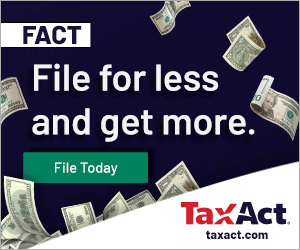Back to School: A Tax Break for Teachers


File your taxes online with confidence.
Teachers are always on the hunt for creative ways to enhance their students’ learning experience. Unfortunately, tight school budgets stifle many of those efforts, and educators are often forced to dive into their own pockets to purchase materials.
In fact, the recent average out-of-pocket spend for school teachers is around $745 with some reporting yearly totals in the thousands. The struggle is real.
However, there is a silver lining.
A tax break called Educator Expense Deduction is available to help ease that financial burden. It allows teachers to deduct $250 of any unreimbursed classroom expenses.
And the best part? It’s available to those who take the standard deduction — itemizing isn’t necessary!
The Educator Expense Deduction is an “above-the-line” deduction, meaning it reduces your adjusted gross income (AGI). And, a lower AGI may qualify you for another tax break.
While this special deduction was in danger of expiring for years, Congress finally made it permanent with the Protecting Americans from Tax Hikes (PATH) Act of 2015.
Here are answers to a few commonly asked questions to help you determine if you qualify for the Educator Expense Deduction and how to take advantage.
Do I qualify for this tax break?
This deduction is available to you even if your job title isn’t “Teacher.”
All teachers, instructors, counselors, principals or aides working in a state-certified public, private or religious school for students in kindergarten through 12th grade are eligible for the deduction.
Additionally, you must work at least 900 hours at the school throughout the year to qualify.
What expenses can I deduct?
When it comes to eligible items, the list is rather large. Generally, you can deduct money spent on:
- books,
- computer equipment and software,
- miscellaneous equipment, and
- supplementary supplies.
Deducting those expenses is a great way to offset costs. However, as you tally up your total spend, keep in mind the IRS does apply an “ordinary and necessary” rule to purchased items.
A qualifying item must serve an appropriate need. Any unnecessary items are not eligible.
For example, if you purchase a large flat-screen T.V. but your school has working units, that purchase can’t be deducted.
Can I still take a deduction if I am partially reimbursed?
If you are reimbursed for supplies, you must subtract the amount of reimbursement you receive from the cost of the supplies.
If you spend $100 on supplies and receive $75 in reimbursement, you can deduct $25 ($100 – $75 = $25).
What kinds of records do I need to keep?
Save all receipts for books and supplies. Highlight or mark line items on receipts every time you make a qualifying purchase. This will make it easier to separate work and personal expenses later.
If you use personal finance software or an online record-keeping system, categorize each expense through the year to keep yourself organized.
What if my spouse and I are both teachers?
If you and your spouse work in a state-certified school system, you can deduct a maximum of $500.
If you file separate tax returns, you can only deduct $250 each.
I spent more than $250. Can I deduct the rest?
Unfortunately, not in most cases. The Tax Cuts and Jobs Act of 2017 eliminated the deduction for unreimbursed employee expenses for most professions – including teachers. That said, a handful of states still allow that deduction for employees, including teachers, and so you may have a chance to claim it on your state return depending on where you reside.
Alabama, Arkansas, California, Hawaii, Minnesota, New York, and Pennsylvania all allow a deduction for unreimbursed employee business expenses.






